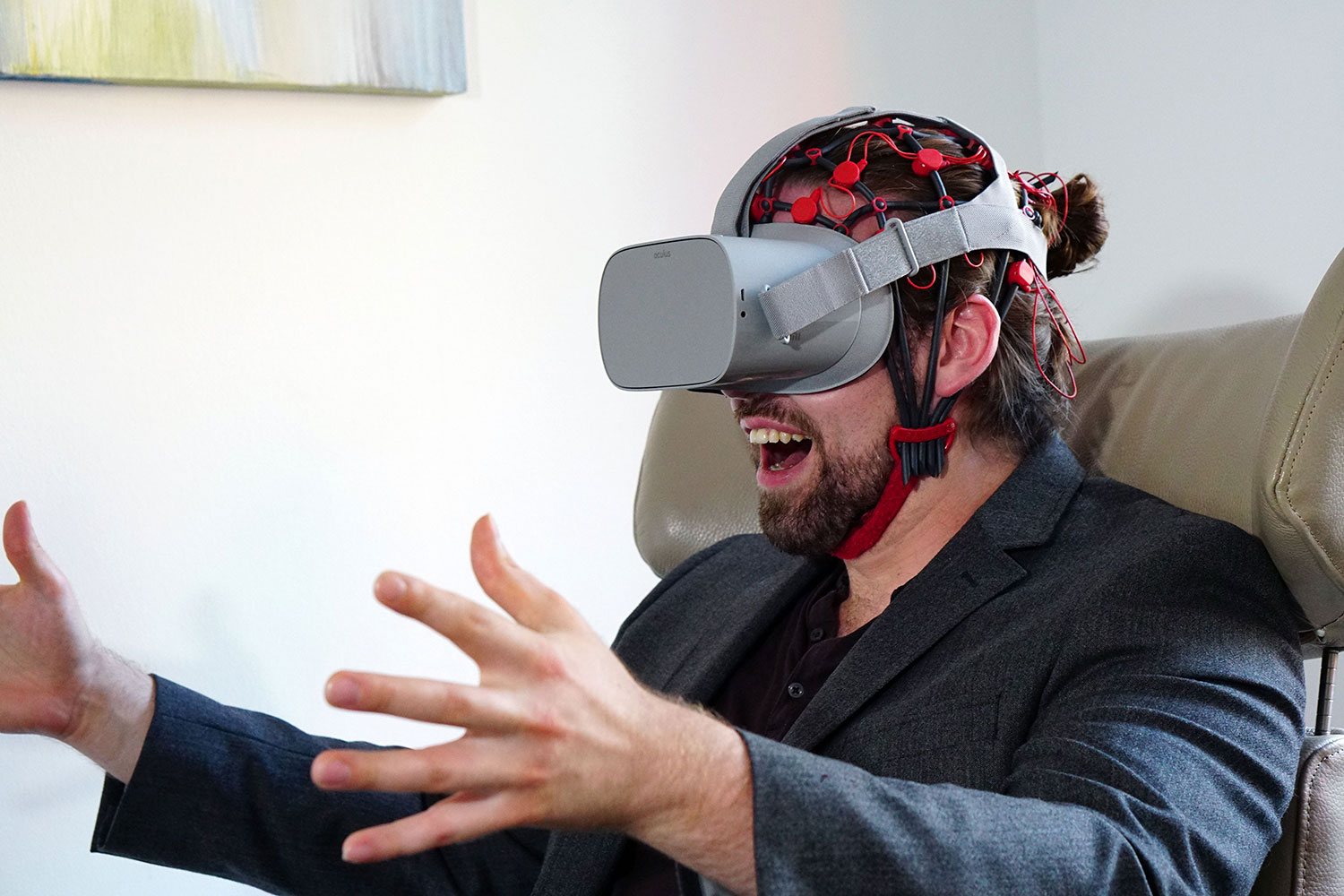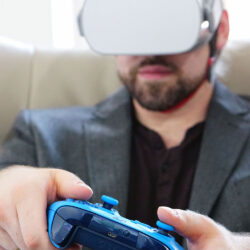
Brain Training With Computers
Can computers optimize our brains? The Munich-based startup Brainboost is convinced of this idea. Neurofeedback and Virtual Reality technologies are used to visualize brain activity on screens. This could strengthen the brain and make thought processes visible.
People with completely different needs come to Brainboost. “In the medical field, we have patients with a high level of suffering and therefore they do neurofeedback. In partnership with us, they increase their ability to concentrate or reduce their fears and stress levels. But with neurofeedback not only medical clients can improve their performance and quality of life,” explains Philipp Heiler, medical director of the start-up. Together with his brother Tobias, who studied sports science and management, and a young team of therapists, he opened a practice at the Sendlinger Tor in Munich in 2015. “I like the people and the city, as well as the the high-tech and creative potential. And, of course, Bavaria’s support programs, from which we could already benefit,” says Philipp Heiler.
What is Neurofeedback?
In simple terms, people learn to better understand and control their brain with neurofeedback, especially the unconscious processes. Neurofeedback captures a person’s brain waves through brain mapping. Electrodes on the scalp measure the activity level in the brain. Factors such as concentration, attention, relaxation, tension, and anxiety can be shown with this method. An amplifier evaluates the data and sends the numbers to a computer. The computer creates diagrams or illustrates the data as a pictorial abstraction of the brain. Colour spots then indicate neural activity.
A Gym For the Head
At Brainboost, the computer additionally interprets the numerical values as an input for computer games, the so called feedback games, where a person can control a game character through brain activity, for example while playing a Jump´n´Run game.
What’s the point? If a certain brain activity leads to success and another activity does not, this influences the human mind. Psychologists speak of “operant conditioning”, i.e. learning about reward and punishment. This already works with very simple skill tests, like a concentration exercise where the test subject is supposed to hold a floating magician in the air. If the exercice is successful, the person feels automatically pleased. Humans constantly strive towards rewards and an increase in production of endorphins. People can train their brains with feedback games, just like a muscle.
VR Technology Improves Results
Brainboost no longer relies on simple 2D skill tests. The start-up works with virtual reality headsets that disconnects the viewer from his environment. “We have investigated the advantages of VR in neurofeedback in a Master‘s thesis. The higher immersion results in a faster learning process. With neurofeedback, people want to gain control over processes, but at the beginning they have no idea how this can work best. In the encapsulated, immersive VR frame, they learn faster.”
More Success With 360 Degree Systems
Currently, Brainboost’s neurofeedback is mainly based on conventional 2D games in the VR room. “Our goal is to work with VR features, i.e. gesture control, eye tracking, and events that are designed for the VR experience. With our software the viewer can control the brain activities that “change” features in the virtual world. Software prototypes based on the game development tool “Unity” are already running.
Neurofeedback gets really interesting in combination with VR headsets and in connection with everyday transfer activities. In the future, patients could bring a 360-degree image of their office into their doctor‘s practice and receive this image mirrored in a VR headset. Patients won‘t train using abstract scenes anymore, but instead find themselves in situations that cause problems in their everyday life, like classrooms or meeting rooms for example. “In a virtual space, we can implement neurofeedback in a familiar environment and the transfer to the real world gets easier,” explains Philipp Heiler.
Neurofeedback Therapy
The Brainboost offer is not cheap, however. One hour costs 87 euros. And it is not surprising that several sessions are necessary. “A reasonable amount of training is between ten and thirty hours. We try to reduce costs by optimising processes. But we definitely don’t want to deteriorate our quality,” says Philipp Heiler.
“In fact, neurofeedback is an ongoing process. As in sports, I can challenge myself and set intermediate goals because this makes me feel good; it is similar to meditation too,” he adds. Brainboost’s ambitious goal is to create a gym-like model. But in the brain gym it is all about the mind instead of the body.
The health insurances do not cover the costs, though private health insurances recognise the necessity in individual cases. Are they one step ahead? “I see neurofeedback as a technology of the future. If more and more jobs are taken over by robots, humans will have one single life task: to be happy. And that’s only possible if the brain plays along. This is exactly the purpose of our neurofeedback.”
More information
wikipedia.org : Instrumentelle und operante Konditionierung



